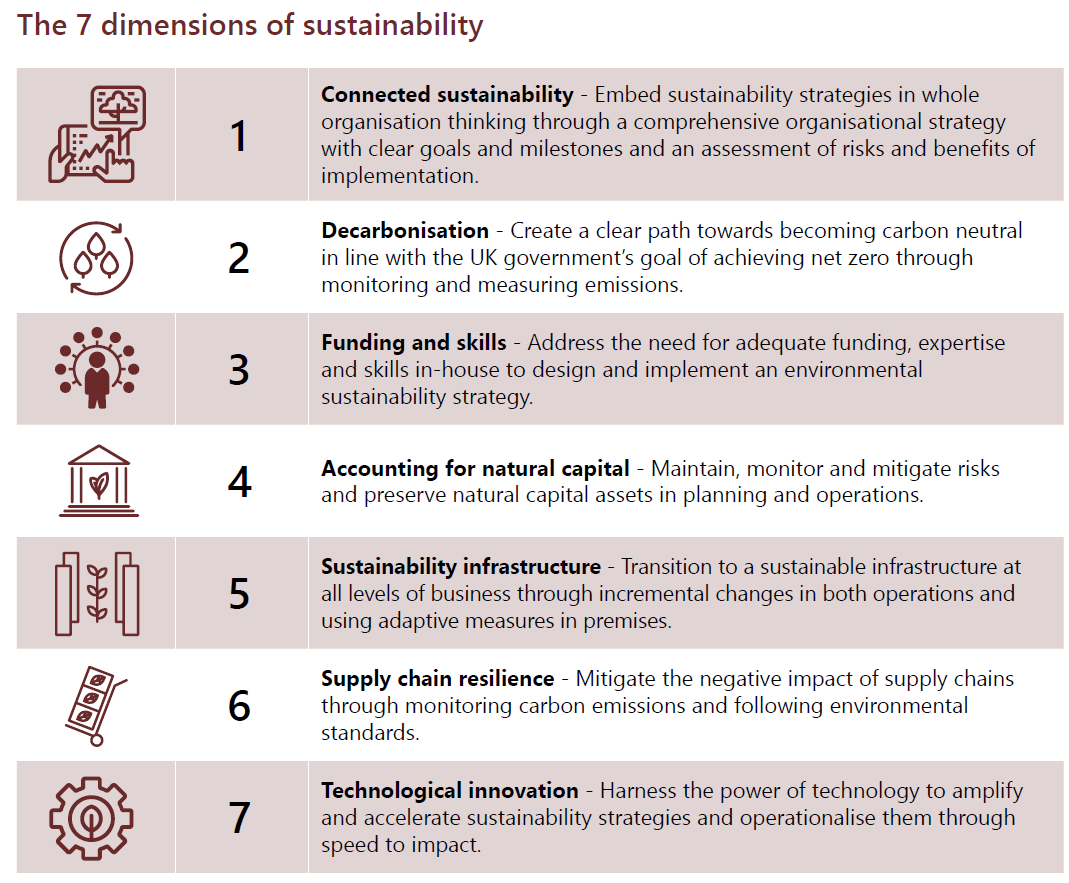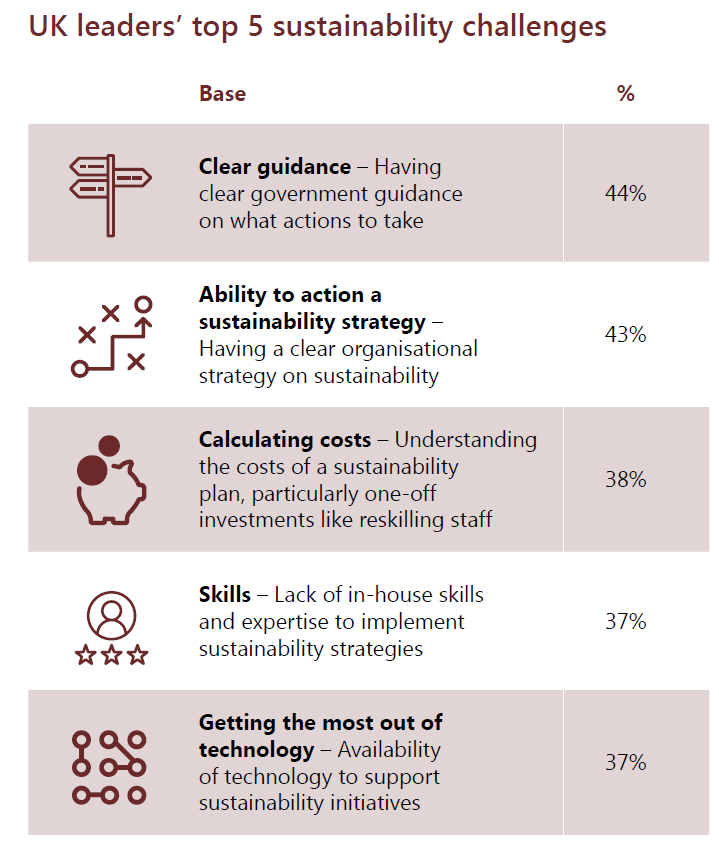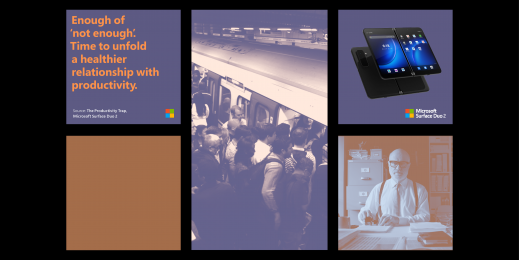
From raw materials to your front door
Ensuring products are made in a sustainable way has never been more important
When electrical goods e-tailer AO.com asked customers what they look for in a washing machine, the UK-based company got an interesting answer.
It wasn’t just the look, the price tag or the quietness of the spin cycle that mattered to British consumers. The country’s largest online-only white goods seller found that what also persuaded customers to buy a more expensive product or switch brands was the energy efficiency rating assigned to each machine.
Such gauges are compulsory for electrical goods sold in the UK, and indicate whether a product uses a lot of power. They’re proving popular as customers ask more questions about sustainability when buying products, including the thousands of items sold on AO.com.
They found that customers don’t mind paying more for a more sustainable product if they can see how that product will save them money through energy efficiency and being more durable.
Ali Rezvan, Retail Executive at Microsoft, believes retailers are uniquely placed to make effective environmental change for the societies in which they operate.
“Retail is at the heart of everyday life, which means the sector has a fantastic opportunity to make a real difference on climate change,” he said.
Shopping for change
Retailers are under pressure to demonstrate their environmental credentials because they are among the largest carbon emitters.
While their shops and online sites may have a negligible impact on the environment, the effects of their suppliers and supply chains – which often stretch across continents – can be considerable. According to the British Retail Consortium, UK retailers account for more greenhouse gas emissions than all road transport in the country each year.
To help them tackle the issue, Dr Chris Brauer at Goldsmiths, University of London, in partnership with Microsoft, constructed a sustainability “blueprint”, a step-by-step guide to transitioning to net zero. It includes setting efficiency targets, reducing carbon emissions, giving staff the skills to make needed change and working with suppliers to ensure they are aligned.
One of the key steps is using technology to help identify where change needs to be made and how to do it. It’s only by knowing where improvements are required that action can be taken – and that can only be achieved with reliable, accurate data.
“Organisations need to see their supply chain as a network in which everyone collaborates to become greener in both processes and outcomes,” Rezvan added. “That may require supplier codes of conduct to be updated to ensure the supply chain is calculating and reporting on scope one, two and three emissions data.”
Using technology
Like thousands of other companies around the world, AO.com turned to Microsoft’s Azure cloud-based solutions to help it track and reduce its emissions.
Among the tools it deployed was the Microsoft Cloud for Sustainability, a Software-as-a-Service solution that helps organisations record, report and reduce their environmental impact through automated data connections and actionable insights.
Among the first steps in a company’s journey to net zero is the gathering of data on its own activities and those resulting from the sources of electricity, heating and cooling systems it uses. These are known as Scope 1 and Scope 2 emissions, respectively, under the internationally recognised Greenhouse Gas Protocol standards.
AO.com’s performance has been improved by its position as the only UK retailer that has its own recycling centre, where it repairs, refurbishes and re-uses e-waste. Its goal is to create new appliances from the recycled materials of old ones.
The insights gained from its own data prompted AO.com to further improve its performance by moving most of its operations to renewable energy sources. Its long-term ambition is to be able to answer questions about the carbon footprint of each of the products it sells.
Growing demand
The white goods retailer is not alone in wanting to reduce its environmental impact. Many organisations want to lessen their carbon footprint and explain to customers and stakeholders how they are doing so.
Addressing a company’s environmental impact is the right thing to do in terms of tackling climate change but it also makes sound business sense. Retailers who post clear and reliable sustainability information have a competitive advantage as they are increasingly favoured by consumers, investors and regulators.
They are also championed by staff. Many employers know that employees want to work for a company that takes its environmental obligations seriously – 70% of people employed in the UK retail sector say action on the environment should be one of their employer’s top priorities.
Nevertheless, some organisations struggle to put sustainability policies into action. Supply chains can be long and complex, stretching across continents. Even if the data is available, it can be difficult to set it out in a format that’s accessible and actionable. But it’s a critical step.
“The retailers that will thrive in the future will be those that have an intelligent, digital system that enables a constant flow of information drawn from multiple data points, including their e-commerce operation and their bricks and mortar stores,” Rezvan said.
Adding to the necessity of getting the data workstream right are gathering regulations. Soon, companies will be required to report on “Scope 3” emissions. These are the toughest ones to track because they require transparency into the activities of suppliers and the organisations that make and transport products.
Take the example of a cotton clothing retailer. It would need to answer many questions to substantiate claims that its supply chains are sustainable: Who picks the cotton? What are the working conditions? What is its salary structure? How much water does it use to make garments? What chemicals, dyes and plastics are used?
Processing data on short, domestic supply chains is easier. But if the supply chain is long and international, there needs to be a consistent approach to compiling data to ensure that information from a retailer’s operations located in California, for example, is as readable and manageable as that from China.
Microsoft’s Cloud for Sustainability gives retailers the power to manage all that data on a single platform, enabling them to identify sustainability issues when they occur and implement change. The process is given added speed because the platform provides access to near real-time reported data.

Cloud gains
Moving data and its management into the cloud helps companies reduce their own emissions by lessening the reliance on first-party hardware, energy and paper. In turn, this means retailers can also expect to see increased efficiencies and reduced costs.
To ensure the impact of even these activities are kept to a minimum, Microsoft’s Emissions Impact Dashboard gives companies visibility into the emissions associated with the services they use. As a retailer’s business grows, the dashboard can also help the organisation plan for the future by estimating the value of additional emissions savings when more applications and services are moved to the cloud.
Importantly, clients can rest assured that Microsoft is not just providing these useful services, it’s also acting as an ally. In 2020, the company made a series of commitments relating to carbon, biodiversity, water and waste. It plans to be carbon negative, replenish more water than it uses and generate zero waste in its direct operations, products and packaging.
 Musidora Jorgensen, Chief Sustainability Officer for Microsoft UK, said: “For the world to achieve Net Zero targets, every organisation must have a clear understanding of how every aspect of their operation affects the planet. Business leaders must set sustainability targets and expectations for every stage of their products’ life cycles – from collecting raw materials, through manufacturing, to delivery. That workstream starts with measuring the data throughout your supply chains.
Musidora Jorgensen, Chief Sustainability Officer for Microsoft UK, said: “For the world to achieve Net Zero targets, every organisation must have a clear understanding of how every aspect of their operation affects the planet. Business leaders must set sustainability targets and expectations for every stage of their products’ life cycles – from collecting raw materials, through manufacturing, to delivery. That workstream starts with measuring the data throughout your supply chains.
Knowing how to protect the environment and society is only possible if we can understand how our activities are, and have been, impacting it. That enables us to predict what might happen in the future and offer solutions to making things better.
Again, data is key and Microsoft’s Planetary Computer offers a solution. The open-source application connects “trillions of data points about the environment” submitted by thousands of stakeholders worldwide to help predict possible environmental events. The “citizen science” project also gathers data from individuals around the world using sea, land and space measurements, to create a holistic impression of the state of the environment.
This comprehensive and accessible library of international ecosystem information can help people make better-informed sustainability decisions.
For retailers it’s invaluable for identifying areas of ecological fragility to help guide their Scope 3 procurement and investment decisions. Being able to do that remotely means they needn’t generate additional emissions by travelling to potential business or supplier sites.
Staying sustainable
 Locking in sustainability policies now is essential for retailers. But they need to safeguard their initiatives into the future by baking them into their corporate culture. That’s all the more important given that demand for sustainable practices is greater among younger consumers and employees.
Locking in sustainability policies now is essential for retailers. But they need to safeguard their initiatives into the future by baking them into their corporate culture. That’s all the more important given that demand for sustainable practices is greater among younger consumers and employees.
“Transformational change is often driven by generational change,” said Rezvan at Microsoft.
Inculcating that into corporate purpose is gaining traction slowly, however. The Microsoft-Dr Chris Brauer survey found that only 15% of staff had been given any sustainability training.
Again, better data management offers a solution. Easy access to accurate information can empower employees to identify where improvements can be made. It also provides the tools to upskill staff so they are confident in using the technology and working with the data on a daily basis.
In turn, tech-adept employees can act as ambassadors for sustainable business practices encouraging suppliers and partners further down the supply chain to adopt them.
Further reading:
Joining the dots: What does sustainability mean for retailers?
















